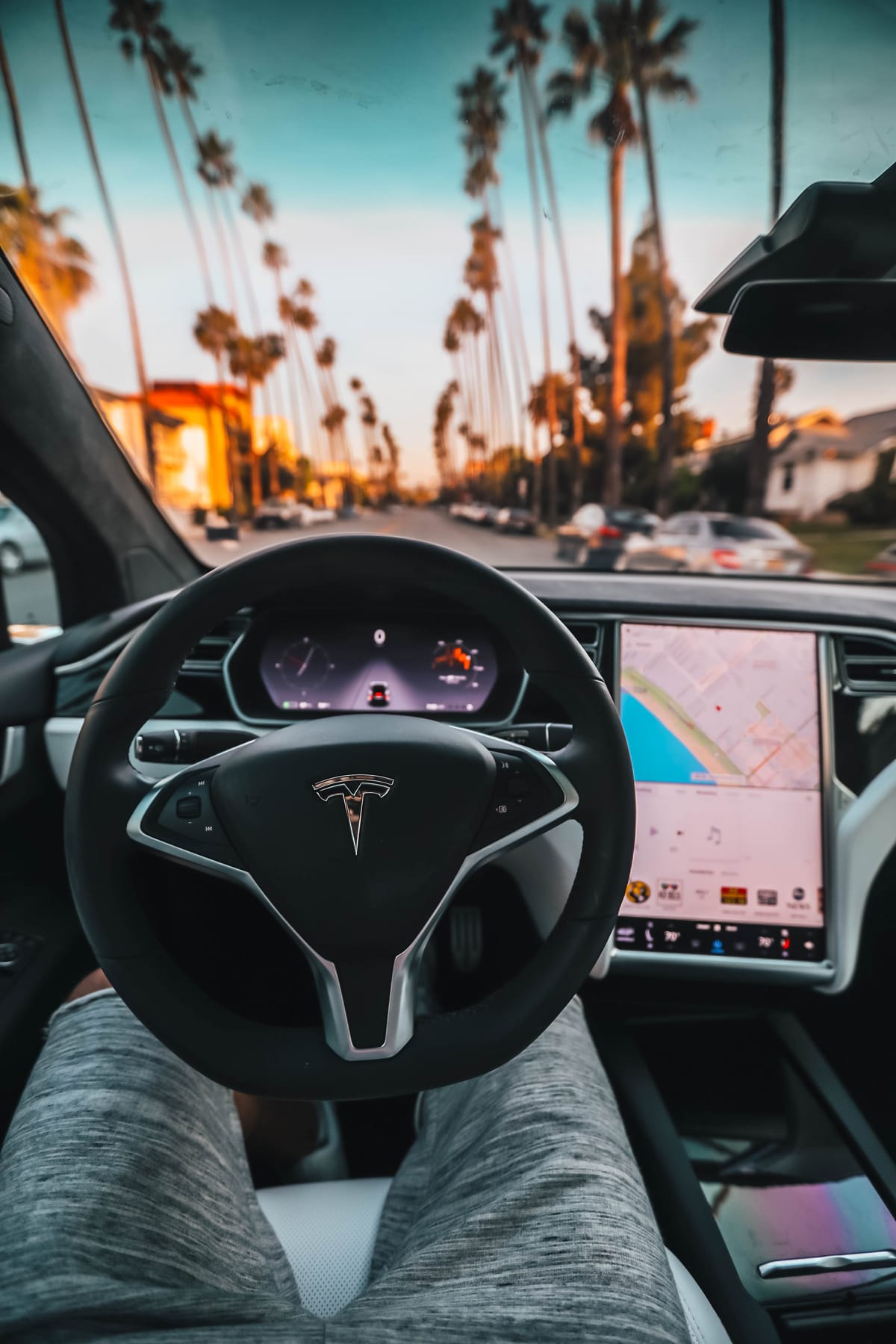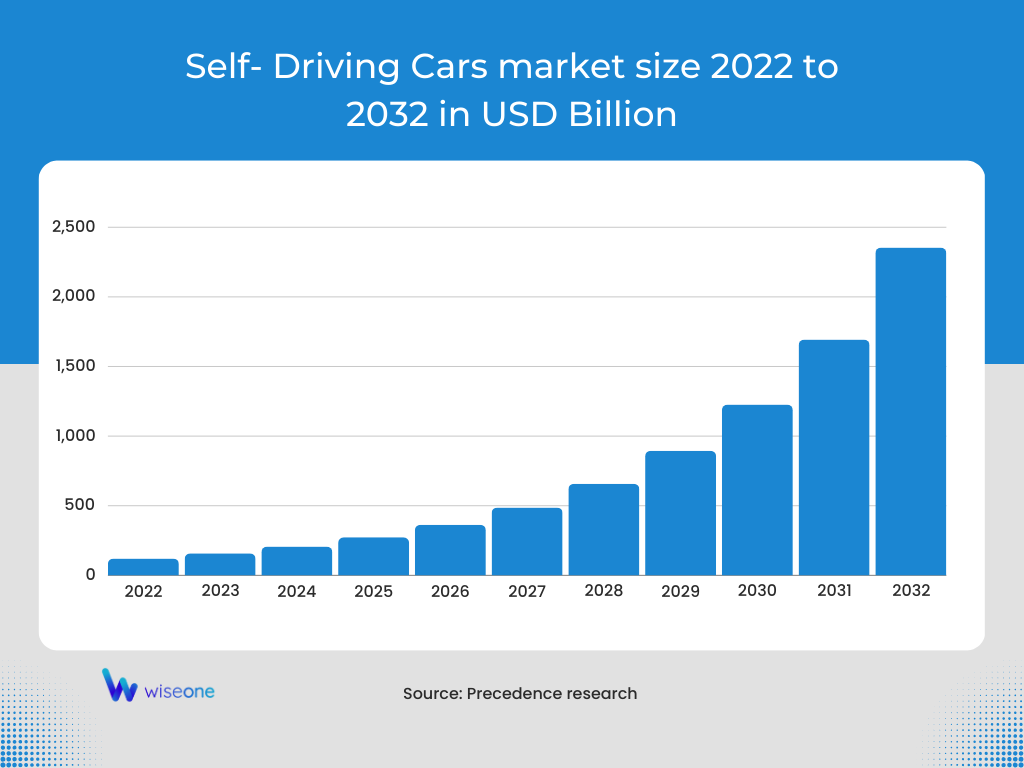Self-driving cars: everything you need to know

Introduction
The evolution of autonomous vehicles has ushered in a new era of transportation, marked by advanced technologies that redefine our understanding of driving. 2014 SAE International introduced a comprehensive classification system, dividing autonomy into six distinct levels. These levels highlight the progressive nature of vehicle automation and underscore the pivotal role of driver intervention and attentiveness. From Level 0, where drivers retain complete control, to Level 5, where cars navigate independently, each level signifies a leap in technological prowess. As we delve into the intricate world of self-driving vehicles, understanding these levels becomes paramount, shaping the future of mobility.
Levels of autonomy
In 2014, SAE International, a standardization body for the automotive industry, introduced a classification system with six levels to describe the extent of vehicle automation. This system focuses on the level of driver intervention and attentiveness required rather than the vehicle's capabilities. Let's break down the six levels:
- Level 0 (No Automation)
Most cars and trucks currently fall into this category. In Level 0, the driver is responsible for steering, throttle, braking, monitoring surroundings, navigation, and deciding when to use turn signals or change lanes. Some warning systems, like blind-spot and collision warnings, may be present.
- Level 1 (Driver assistance)
Vehicles at this level can handle steering, throttle, and braking, but only in some situations. The driver must be prepared to take over these functions if required by the vehicle. It means the driver needs to stay aware of the car's actions and be ready to intervene.
- Level 2 (Partial assistance)
At this level, the car manages steering, throttle, and braking but immediately allows the driver to take control if it detects unresponsive objects or events. The driver monitors the surroundings, traffic, weather, and road conditions.
- Level 3 (Conditional assistance)
The car monitors the environment and handles steering, throttle, and braking in specific situations, such as freeway driving. However, the driver must be ready to intervene if prompted by the car.
- Level 4 (High Automation)
In Level 4, the car manages steering, throttle, and braking and monitors surroundings in a broader range of environments, excluding severe weather. The driver activates automatic driving when safe, and after that, the driver's active participation is not required.
- Level 5 (Full Automation)
At this highest level, the driver only needs to set the destination and start the car. The vehicle takes care of all tasks and makes its own decisions. Full automation allows the vehicle to drive to any legal destination.
These levels serve as crucial benchmarks for gauging the technological advancement of a car. The pivotal distinction begins at Level 3, where the automated driving system gains the ability to monitor the driving environment.
Advantages and drawbacks of self-driving cars
As technology advances, vehicles are becoming more automated, with the global autonomous car market projected to reach $60 billion by 2030. While the rise of self-driving cars brings convenience and safety, discussions on the pros and cons have surfaced, particularly with ongoing debates about Tesla AutoPilot. Let's explore some commonly raised points in favor and against self-driving cars.
Pros of Self-Driving Cars
- Prevention of Car Crashes
Human errors contributed to 94% of the 37,133 vehicle fatalities in 2017. By relying on advanced systems, self-driving cars can significantly reduce accidents by eliminating factors like drunk or distracted driving.
- Societal Cost-Savings
Autonomous vehicles could save society around $800 billion annually by reducing costs related to car crashes, easing pressure on healthcare, improving transportation efficiency, and enhancing fuel savings.
- Traffic Efficiency
Self-driving cars can communicate with each other in real-time, optimizing travel distances and routes. This communication minimizes traffic congestion, making travel more efficient.
- Better Access and Mode of Transportation
Self-driving cars provide a safe and reliable mode of transportation for people who cannot or choose not to drive, such as those with disabilities or older people. They also benefit areas with limited public transit coverage.
- Environmentally Friendly
Autonomous cars are likely to be electric, reducing emissions. Consistent speeds and minimized braking and accelerating contribute to environmental sustainability.
Cons of Self-Driving Cars
- Security Issues
Concerns arise about hacking since automated cars need to share a standard network protocol. A hack could significantly damage busy roads, causing collisions and traffic gridlock.
- Job Losses
The emergence of self-driving cars may make careers dependent on driving obsolete, affecting industries like trucking, taxi services, and food delivery, leading to job losses.
- Initial Costs
The initial cost of fully autonomous vehicles may be around an additional $250,000 per vehicle. While prices are expected to decrease as technology matures, the initial barrier may be too high for many.
- Moral Machine Dilemma
Self-driving cars may struggle to make ethical judgments in complex situations. Deciding between unfavorable outcomes, like hitting a pedestrian or a tree, poses a challenge, and diverse opinions make it difficult to program definitive answers.
- Machine Error
Although self-driving cars may prevent many accidents, the risk of machine errors remains. Software or vehicle part failures could put the driver in danger, emphasizing the importance of addressing and minimizing such risks.
As self-driving technology progresses, ongoing discussions and improvements are vital to harnessing the benefits while addressing potential challenges.
How do self-driving cars work
Here's a simplified explanation of how self-driving cars work:
A unique sensor on the car's roof, called LIDAR, spins around and scans a 60-meter area, creating a 3D map of what's around the vehicle. Another sensor on the left rear wheel keeps track of sideways movement, helping the car stay in the correct position on the map. Radar systems in the front and rear bumpers measure distances to things in the way.
The car uses innovative software, like a computer brain, which connects to all these sensors. It also gets information from Google Street View and video cameras. This computer brain acts like a human brain, making decisions on driving, like steering and braking.
The car's software checks Google Maps for landmarks and traffic signs to know where it's going. If needed, a person can take control of the vehicle using an override function.
The car can also talk to other vehicles nearby. They share info about traffic and safety, like friends talking to each other. This communication uses unique systems in the cars and along the roads, helping them share helpful details.
The technology behind self-driving cars
Self-driving cars rely on four key technologies: environment perception, navigation, path planning, and car control. Each technology functions independently, with no overlap.
Car Navigation System
Knowing where the vehicle is and how to reach its destination is crucial in self-driving cars. A car navigation system helps the self-driving car achieve this by automatically figuring out its position and planning the route to the destination. This system combines a geographic information system, a global positioning system (GPS), and a digital map database. The GPS gathers location information like longitude and latitude from satellites, which, along with road information, is used to calculate the route using intelligent algorithms. Once calculated, the self-driving car knows its location and can program the driving route.
Environment Perception (Laser, Radar, Visual)
The second module in a self-driving car is environment perception, where the vehicle independently senses its surroundings. This involves using sensors like laser, radar, and visual sensors to collect information about the environment. The laser sensor bridges the gap between the natural and data worlds, the radar sensor perceives distances, and the visual sensor recognizes traffic signs. The data from these sensors are fused to create a comprehensive picture of the surroundings, including road edges, obstacles, and road markings.
Path Planning
Path planning, or motion planning, determines a sequence of trajectories for an autonomous vehicle. The goal is to navigate safely and efficiently from the current location to the destination, avoiding obstacles and following traffic rules. This involves calculating a path, considering various constraints, and optimizing the vehicle's motion. Motion planning consists of global route planning, local behavior planning, and local trajectory planning. It plays a critical role in ensuring the car makes informed decisions and navigates effectively in its environment.
Car Control
Vehicle control involves managing the vehicle's speed and direction. A self-driving framework includes perceiving the vehicle's status and developing a control method. The environment perception module, which provides information about the environment, vehicle status, driving target, traffic regulations, and driving knowledge, feeds into the vehicle control algorithm. This algorithm calculates the control target, determining direction, speed, lights, and horn. The vehicle control system then executes these instructions to control the vehicle accordingly.
Self-Driving Cars Market

The global market for self-driving cars was valued at USD 121.78 billion in 2022 and is expected to reach approximately USD 2,353.93 billion by 2032. This represents a significant growth rate of 35% from 2023 to 2032. In the U.S., the autonomous vehicle market was valued at USD 36.4 billion in 2022.
Factors Driving Growth
The demand for self-driving cars is expected to rise due to government funding, supportive regulations, and investments in digital infrastructure. These factors are anticipated to boost the market, providing independent mobility for people with disabilities and non-drivers. Self-driving cars also offer passengers the flexibility to rest, read, or work during travel, enhancing efficiency. Technological advancements and diversity in the automotive industry have introduced autonomous cars as a breakthrough technology, especially in response to the increasing number of accidents caused by human error.
What's Behind the Rise of Self-Driving Cars?
- Improving Road Safety
The increasing number of road accidents, primarily due to human error, has prompted governments to focus on road safety regulations. Self-driving cars with advanced technologies like navigation and anti-collision systems offer a safer alternative to traditional vehicles.
- Addressing Traffic Congestion
With the global car count expected to exceed 2 billion by 2050, concerns about traffic congestion are growing. Autonomous vehicles can communicate with each other, helping to avoid congestion. Self-driving cars offer convenient and efficient point-to-point travel in the sharing economy, reducing traffic issues.
- Growing R&D Spending
Auto companies are investing heavily in research and development for autonomous vehicle technology. BMW is allocating a larger revenue share to R&D, focusing on autonomous and electric vehicles. Collaborations with tech developers, like Nvidia, are helping car manufacturers advance technologies such as object recognition.
- Environmental Impact
Traditional vehicles contribute significantly to pollution and health hazards. Autonomous vehicles, including electric cars, are expected to reduce pollution due to their efficient fuel usage. The rise of ride-sharing companies like Uber, Lyft, and Gett investing in autonomous vehicles further contributes to environmental conservation.
- Increased Energy Savings
Integrated with artificial intelligence, autonomous cars enhance fuel efficiency through real-time traffic updates and optimal route planning. They use proper acceleration and gear shifts, reducing fuel wastage compared to human drivers. Platooning of vehicles and the adoption of hybrid technologies contribute to energy savings, and the sharing economy further supports energy-efficient autonomous cars and trucks.
In summary, the rise of self-driving cars is driven by the need for improved safety, addressing traffic issues, significant R&D investments, environmental concerns, and increased energy efficiency.
Self-driving cars market challenges
- Vehicle Safety and Cybersecurity Concerns
Autonomous vehicles blend physical and virtual elements, making them susceptible to cybersecurity threats. Hackers can compromise the virtual systems, leading to potential dangers like accidents or theft. Past incidents, such as the hacking of a Jeep Cherokee in 2015, highlight the vulnerabilities. Trickery of LiDAR and image recognition systems also poses risks, affecting passenger safety. To overcome these challenges, rigorous testing and redundancy in systems are crucial, though they may increase the overall cost of autonomous cars.
- Infrastructure Gaps in Developing Countries
The success of autonomous vehicles relies on factors like policies, technology, infrastructure, and customer acceptance. However, in developing nations like India, Mexico, and Brazil, the road infrastructure is less advanced than in developed countries. The need for well-maintained roads, signs, and updated navigation systems is a hindrance. The rankings, such as Brazil being 107th in infrastructure development, indicate that investments in improving infrastructure are vital for the successful adoption and growth of autonomous vehicles in these regions. Upgrading existing infrastructure poses a challenge in growing economies.
- System Reliability and User Acceptance Uncertainty
Technological advancements in driverless cars aim to enhance features, but concerns about social acceptance and user preferences remain. Some users prefer upgrading their current cars with safety features rather than adopting fully autonomous vehicles. Social equity concerns and potential business disruptions like car repairs and insurance due to reduced accidents affect user acceptance.
Key Companies in the Autonomous Vehicle Market
The global market for self-driving cars is highly competitive, mainly led by major automotive giants. These industry leaders focus on strategies like collaborations, partnerships, mergers & acquisitions, and expanding into new regions to fuel their growth. For example, in August 2017, Intel Corporation, BMW AG, Fiat Chrysler Automobiles (FCA), and Mobileye (an Intel affiliate) joined forces to develop an autonomous vehicle driving platform. The goal was to combine their strengths and resources to speed up product launches and improve development efficiency.
Companies in the industry also invest significantly in product development, especially in high-end electronic devices for advanced automotive features in autonomous vehicles. Changing consumer preferences and a growing interest in environmentally friendly cars drive market players to incorporate such features. These companies often partner with electronic hardware manufacturers to meet consumer demands.
Some notable players in the autonomous vehicle market include:
- BMW AG
- Audi AG
- Ford Motor Company
- Daimler AG
- Google LLC
- General Motors Company
- Nissan Motor Company
- Honda Motor Co., Ltd.
- Toyota Motor Corporation
- Tesla
- Volvo Car Corporation
- Uber Technologies, Inc.
- Volkswagen AG
Conclusion
The landscape of self-driving cars unfolds as a transformative journey, with each level of autonomy marking a significant stride towards a future where vehicles navigate seamlessly, prioritizing safety and efficiency. The advantages, such as the potential to prevent car crashes, societal cost-savings, and improved traffic efficiency, paint a promising picture. However, security issues, job losses, and moral dilemmas highlight the need for careful consideration and ongoing advancements. As we navigate through the complexities, the evolving technology behind self-driving cars, the burgeoning market, and the key players shaping this landscape bring us closer to a horizon where autonomous vehicles redefine how we experience the open road.
FAQ
What are autonomous vehicles?
Autonomous vehicles are cars equipped with advanced technologies that allow them to navigate and drive without human intervention. They use sensors, cameras, radar, and artificial intelligence to understand their environment and make driving decisions.
What is the significance of the SAE International classification system for autonomous vehicles?
The SAE International classification system, introduced in 2014, divides vehicle autonomy into six levels, ranging from Level 0 (no automation) to Level 5 (full automation). This system helps to standardize and communicate the extent of automation and driver intervention required at each level.
What are the six levels of vehicle autonomy defined by SAE International?
- Level 0 (No Automation): The driver handles all aspects of driving.
- Level 1 (Driver Assistance): The vehicle can assist with either steering or acceleration/deceleration.
- Level 2 (Partial Assistance): The vehicle can control both steering and acceleration/deceleration, but the driver must remain engaged and monitor the environment.
- Level 3 (Conditional Automation): The vehicle can handle most driving tasks but may require human intervention.
- Level 4 (High Automation): The vehicle can drive itself in most environments without human intervention, but the driver can take over if needed.
- Level 5 (Full Automation): The vehicle can drive itself in all environments without any human intervention.
What are the main advantages of self-driving cars?
- Prevention of Car Crashes: Reduction of accidents caused by human error.
- Societal Cost-Savings: Savings in healthcare, transportation efficiency, and fuel costs.
- Traffic Efficiency: Real-time communication between vehicles reduces congestion.
- Better Access and Transportation: Enhanced mobility for non-drivers and those with disabilities.
- Environmental Benefits: Likely to be electric, reducing emissions and contributing to sustainability.
What are the main drawbacks of self-driving cars?
- Security Issues: Vulnerability to hacking and cybersecurity threats.
- Job Losses: Potential displacement of jobs in driving-related industries.
- Initial Costs: High initial expense of fully autonomous vehicles.
- Moral Machine Dilemma: Ethical challenges in decision-making during unavoidable accidents.
- Machine Error: Risks associated with software and hardware failures.
How do self-driving cars navigate and make decisions?
Self-driving cars use a combination of sensors (like LIDAR, radar, and cameras), advanced software, and mapping systems (like Google Maps) to understand their environment and make driving decisions. They can communicate with other vehicles and infrastructure to enhance safety and efficiency.
What are the key technologies used in self-driving cars?
- Car Navigation System: Uses GPS and digital maps for positioning and route planning.
- Environment Perception: Uses sensors to gather data about the surroundings.
- Path Planning: Determines safe and efficient trajectories from the current location to the destination.
- Car Control: Manages the vehicle's speed, direction, and other driving functions.
What is the projected market size for self-driving cars?
The global market for self-driving cars is expected to grow from USD 121.78 billion in 2022 to approximately USD 2,353.93 billion by 2032, driven by technological advancements and increasing demand.
What are the main challenges facing the adoption of self-driving cars?
- Vehicle Safety and Cybersecurity: Protecting autonomous vehicles from hacking and ensuring system reliability.
- Infrastructure Gaps: Developing the necessary road infrastructure in developing countries.
- User Acceptance: Overcoming social and practical concerns about the reliability and safety of self-driving technology.
Which companies are leading the development of autonomous vehicles?
Some key players in the autonomous vehicle market include BMW AG, Audi AG, Ford Motor Company, Daimler AG, Google LLC, General Motors Company, Nissan Motor Company, Honda Motor Co., Ltd., Toyota Motor Corporation, Tesla, Volvo Car Corporation, Uber Technologies, Inc., and Volkswagen AG.
What does the future hold for self-driving cars?
The future of self-driving cars promises significant advancements in safety, efficiency, and accessibility. While there are challenges to address, such as security concerns and ethical dilemmas, the ongoing development and adoption of autonomous vehicles are expected to transform transportation and redefine the driving experience.
Enhance your web search,
Boost your reading productivity with Wiseone



